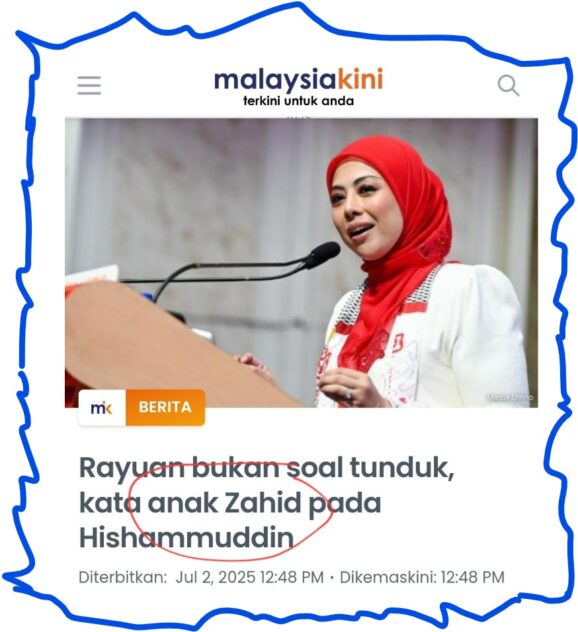BUDGET 2022 was in many respects one that tried to convey the concept of prihatin (caring) and indeed the needs and concerns of the rakyat was addressed to a large extent. This was especially pertinent in relation to welfare assistance – as there was no letting up in the provision of cash handouts or transfers.
Under Strategy 1: “Restoring Lives and Livelihoods”, Bantuan Keluarga Malaysia (BKM) will be introduced to enhance Bantuan Prihatin Rakyat (BPR) as its amount is a bit higher (RM2,000 compared to RM1,800) and the coverage more targeted (eg. additional assistance of RM500 to single parent households).
Budget 2022 will expand the beneficiaries of the i-Saraan scheme while also matching a minimum of 15% from the contributions to a maximum of RM250 per year for those aged between 55 and 60 years.
Under Strategy 4: “Supporting Public Service Delivery”, a Special Financial Assistance of RM700 will be provided to 1.3 million civil servants Grade 56 and below. And one million public sector pensioners will be given RM350.
But the Government’s effort in ensuring equitable tax treatment has fallen short of expectations as being too modest and lacking the political and bureaucratic mettle required.
The announcement concerning the “prosperity tax” of 33% for the next chargeable income at RM100 mil alongside the stamp duty increase on contract notes for trading of listed shares to 0.15%, from 0.1% and the concomitant removal of the RM200 cap triggered a wave of selling pressure when the stock exchange reopened on Nov 1.
This resulted in Bursa’s trading value of the shares’ market capitalisation wiped out to the tune of RM33.8 bil, but the downtrend is expected to be short-lived.
It’s noteworthy that Budget 2022 didn’t mention the reintroduction of the goods and services tax (GST). It’d be awkward when the purpose is to fill in gaps in the coffers and fund welfare aid but increase the inclusion of 20% of households from the M40.
That is, the GST shouldn’t be imposed when the burden will be on the shoulder of a broadening B40 population whose purchasing power have been severely eroded over the years and made worse by COVID-19.
Thus, the GST could only make a comeback when more people have graduated into the M40 as the anchor of the middle class – reflecting increasing purchasing power as a whole.
Budget 2022 also expects that revenue is projected to increase by 5.9% to RM234 bil “in line with better economic prospects”. Income tax alone is projected to constitute 37.5% of Budget 2022.
With such a figure that’s just slightly short of half of the overall budgetary allocation sources, income tax is expected to bear a heavy financial burden.
But is such a projection realistic – given an environment of declined earnings during the lockdowns and hence any profit which will have to be offset by cash flow constraints?
Borrowings and use of Government’s assets is expected to make up only 29.5% of Budget 2022. This means that much of the borrowings will be utilised for debt rollover.
Under Section 4: Debt Management of the FO 2022, “… Federal Government’s total gross borrowings are expected to record RM210.8 bil or 13.9% to gross domestic product (GDP) in 2021 … RM110.4 bil [will be deployed] for principal repayments while RM98.8 bil [is] for deficit financing”.
Debt rollover is, of course, a normal fiscal policy practice. And EMIR Research has been consistently advocating that the government’s budget isn’t like a household. Any constraint is self-imposed.
Therefore, we caution the Government on the existing extent of its debt rollover arrangements and urge that a (lower) “ratio” be self-imposed for every RM300 bil in deficit spending, only RM100 bil is allocated for debt rollover. This is to ensure productive deployment of the borrowings.
Perhaps this should be incorporated into the forthcoming Fiscal Responsibility Act.
This should also bring our debt service charges under control – since more money is used for spending that will bring in the returns in terms of revenue (e.g., tax) which then can be used for debt repayment.
More critically is the fact that we don’t have experience in what’s simplistically known as “money printing” or more accurately better termed as “monetary financing” (MF).
MF is simply what the advanced economies like the US, UK and Japan do – directly and indirectly. Countries that engage in MF typically also engage in structural debt rollover.
This is because at each stage of the economic life-cycle, the government must first spend before it can tax and/or borrow.
In the US, tax liabilities are simply extinguished. Taxes aren’t (intrinsically) needed to fund the Treasury which spends by simply instructing the relevant Federal Reserve branch to credit the account of whomever is the recipient.
But we can do quantitative easing (QE).
QE will help keep the interests paid on our Malaysian Government Securities (MGS) and sukuk, etc. low and represent an indirect method of MF. QE in a limited form will correspondingly support a limited or mild form of MF – whereby Bank Negara Malaysia (BNM) can finance our fiscal spending which can help to reduce the extent of our debt rollover.
That is, instead of borrowing from our institutional investors to rollover our pre-existing debt, we are better off in using QE to pre-empt that (by way of the lenders off-loading their long-term bond holdings on to BNM).
In short, BNM can either just write off the (limited) debt (of long-term bonds) or resell it under, eg. five-year reverse repo agreements (half of 10-year MGS), ie. resale of bonds in exchange for cash from the commercial banks.
Now this cash would come from the prior deficit spending of the Government – either from taxes plus borrowings or borrowings alone.
In effect, instead of a debt rollover, i.e., borrowing to directly pay off the borrowing:
- We have borrowing to spend first;
- The spending then appears as “reserves” in the accounts of commercial banks in BNM;
- Afterwards, the reserves are used to buy back the Government bonds;
- The proceeds from the sale would either be handed over by BNM to the Treasury (together with interest) pay down the debt when the time comes.
This requires concerted strategic fiscal and monetary policy synchronisation which EMIR Research has consistently called for. – Nov 4, 2021
Dr Rais Hussin & Jason Loh Seong Wei are part of the research team of EMIR Research, an independent think tank focused on strategic policy recommendations based on rigorous research.
The views expressed are solely of the author and do not necessarily reflect those of Focus Malaysia.









